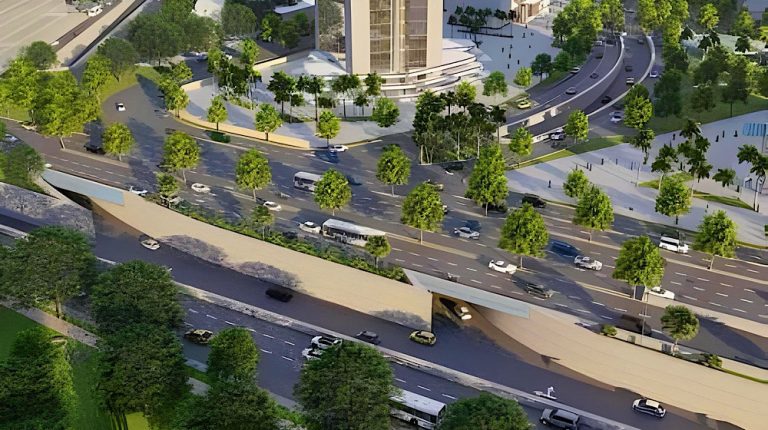Lahore – Central Business District Punjab (CBD Punjab) has officially opened its flagship infrastructure project, CBD Route 47, to public traffic. The inauguration featured a drive-past parade led by Mr. Imran Amin, CEO of CBD Punjab, symbolizing a leap toward a smarter, faster, and more connected Lahore.
The ceremony was attended by Chief Operating Officer CBD Punjab Brigadier (Retd.) Mansoor Janjua, senior officials from CBD Punjab, technical teams, and representatives from NESPAK, NLC, and the project contractors.
Stretching approximately 4.5 kilometers, CBD Route 47 is a three-lane, dual carriageway that links Gulberg’s CBD Quaid District with Walton’s CBD Bab District. Named in honor of Quaid-e-Azam Muhammad Ali Jinnah, the route stands as a tribute to the nation’s founder.
CEO CBD Punjab Imran Amin said, “CBD Route 47 is a landmark addition to Lahore’s urban landscape, ushering in a new era of smart, sustainable infrastructure. It sets a benchmark for future developments across Punjab.”
One of the route’s standout features is its dedicated cycle lane, encouraging eco-friendly and healthy commuting. Additionally, it boasts Pakistan’s first electricity-generating sidewalk, equipped with solar panels capable of producing up to 1 megawatt of clean energy. These solar panels not only supply power to the city but also provide shaded, environmentally friendly pathways for pedestrians and cyclists, reflecting CBD Punjab’s commitment to reducing its carbon footprint and promoting green infrastructure.
Architectural highlights, including thoughtfully designed monuments and an artificial lake, enhance the route’s urban aesthetics, creating a space that is both functional and inspiring.
COO CBD Punjab Brigadier (Retd.) Mansoor Janjua congratulated the people of Lahore, stating, “CBD Route 47 is a unique project that fulfills our promise to the citizens. Under the Chief Minister’s leadership, CBD Punjab is steadily advancing toward building a progressive and prosperous province.”
CBD Route 47 is expected to dramatically reduce travel time between Gulberg and Walton, streamline daily commutes, and stimulate economic growth by improving connectivity.

